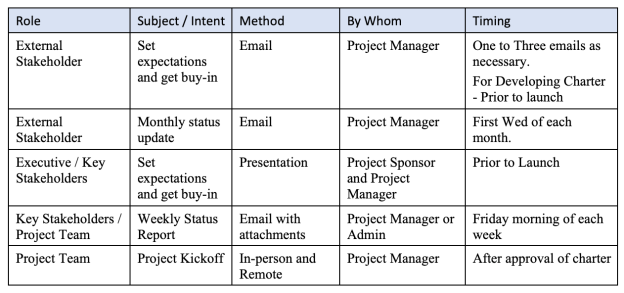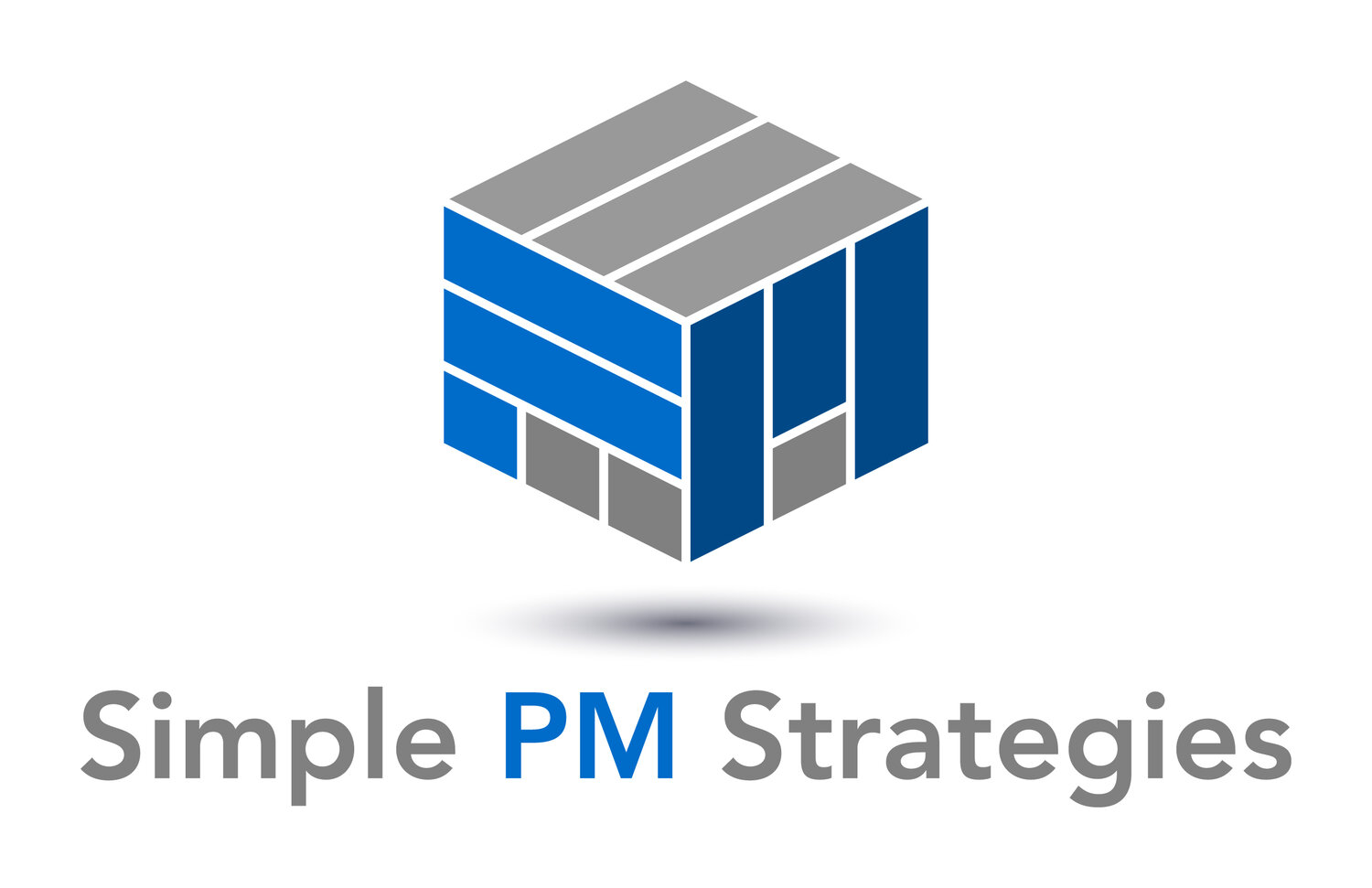2 Ways to Organize for Effective Communications for Your Project
The purpose of this blog article is to cover how to use a communications plan to simplify and streamline stakeholder communications.
Communications is a project piece under the People segment which is under the LEAD domain in the MPM model.

Communications is a project piece under the People segment which is under the LEAD domain in the MPM model
Simplify and Streamline Communications
Project communications can be described in a communications plan with several dimensions, and it can be structured by Role or by Communications Event / Subject.
The important thing is that a bit of a plan is put together especially for coordination and setting communication expectations between the project manager and the project sponsor.
You can greatly simplify and streamline your communications using a communications plan.

Use a communications plan to coordinate messaging
Communications Plan by Role
This communications plan is organized by project role. This view allows you to ensure each role is getting the appropriate number of communications. It can get complicated if there are many different types of events / subjects and many different roles.
Fields include: Role or Personal Name or Group name, Subject / Intent, Method of Communication (email, text, status report, bulletin, general), By Whom, and Timing (daily, weekly, monthly, periodic, based on some event).

Communications Plan by Role and Subject
Communications Plan by Message
This kind of communications plan is organized by Subject. This view allows you to ensure that for each significant event each role is getting the communications. It can get complicated if there are many different types of messages for different roles.
Fields include: Subject / Intent, Role or Personal Name or Group name, Method of Communication (email, text, status report, bulletin, general), By Whom, and Timing (daily, weekly, monthly, periodic, based on some event).

Communications Plan by Subject and Role
Communications Plan Subject / Events
The following are some examples of subjects / events that can be used for project communications:
- Executive Presentation
- Organizational Awareness and to Gain Support
- Introduction and Project Expectations
- Project Launch
- Project Schedule Awareness
- Update for Sponsor
- Issue Reporting, Logging and resolution
- Change authorization
- Working Team Meetings
- Business Area Status update
- Readiness discussion
- Go-NoGo Business Readiness
- Post-Implementation Reports
- Project Closure
- Milestone Celebrations
Summary
Projects can have many communications and the author can be the project manager or support personnel. As well the project sponsor may be the one who communicates up and out, but that depends on each project’s unique situation.
Project communications can be organized several different ways, depending on the roles and subject or events for communication. The important thing is to have a framework so the sponsor and project manager are on the same page.
Action Steps / Apply This Knowledge
- If you don’t have a communications plan, put together a simple table and include just the major roles such as stakeholders and team members. Share with your project sponsor or key team members.
- Once the initial structure and main subject or events are agreed upon then it can be expanded to include more granular levels such as timing for implementations in the business area.
- Prompt engineering guidance for AI GPTs such as chatGPT: “I’m a business leader managing a project whose purpose is Y, and X kinds of stakeholders. What are some things I should consider when creating a communications plan, and what communications would be relevant to those kinds of stakeholders?”
Learn More to Do More
Business evolves through change initiatives otherwise known as projects. The key to managing these change initiatives so you have more time, and less stress is to use simple strategies and tools.
Check out the Learning Hub’s other Articles with Actionable Steps, organized with a busy leader in mind, by topic or main idea, and with some AI GPT (e.g. ChatGPT) prompt engineering suggestions under the Action steps: https://simplepmstrategies.com/learning-hub-index
LEAD – Communications Plan
© Simple PM Strategies 2024
